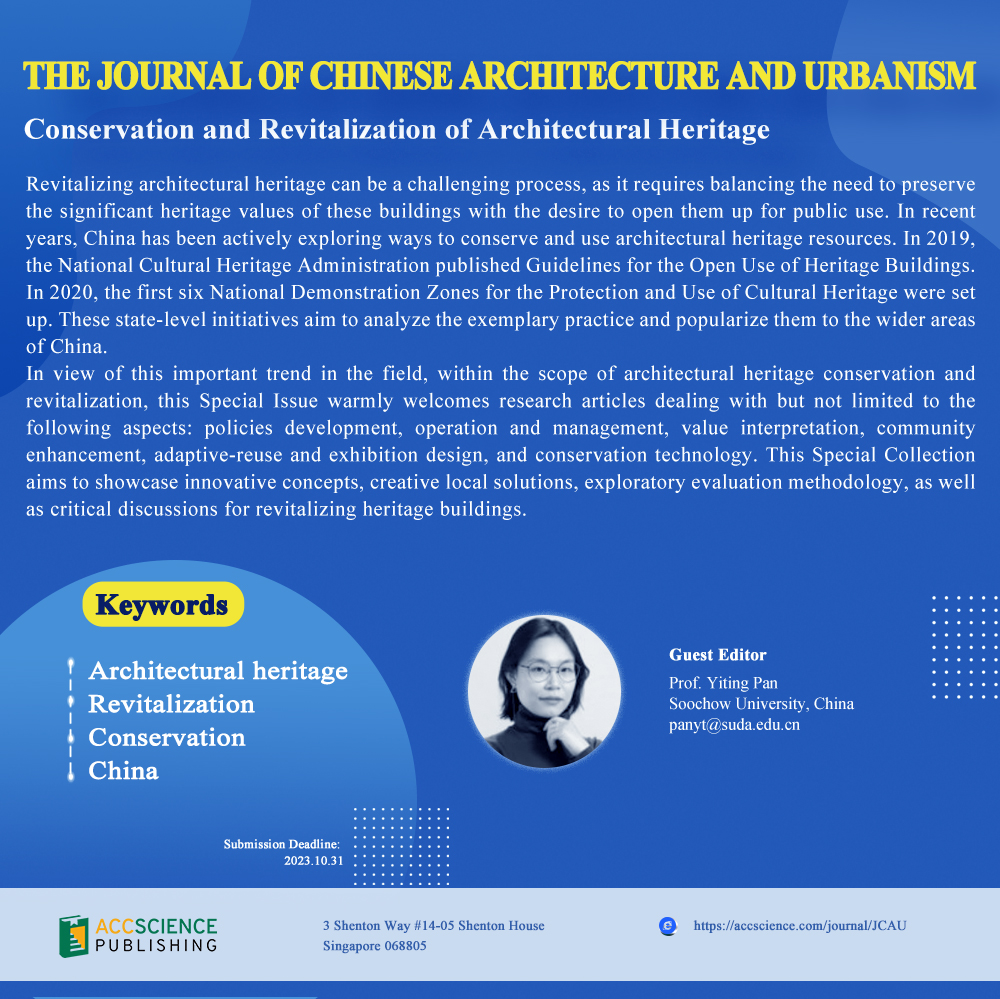
Revitalizing architectural heritage can be a challenging process, as it requires balancing the need to preserve the significant heritage values of these buildings with the desire to open them up for public use. In recent years, China has been actively exploring ways to conserve and use architectural heritage resources. In 2019, the National Cultural Heritage Administration published Guidelines for the Open Use of Heritage Buildings. In 2020, the first six National Demonstration Zones for the Protection and Use of Cultural Heritage were set up. These state-level initiatives aim to analyze the exemplary practice and popularize them to the wider areas of China.
In view of this important trend in the field, within the scope of architectural heritage conservation and revitalization, this Special Issue warmly welcomes research articles dealing with but not limited to the following aspects: policies development, operation and management, value interpretation, community enhancement, adaptive-reuse and exhibition design, and conservation technology. This Special Collection aims to showcase innovative concepts, creative local solutions, exploratory evaluation methodology, as well as critical discussions for revitalizing heritage buildings.
Style evolution rules of Tibetan dwellings in the Amdo Tibetan region: An architectural typology perspective
Troglodyte settlements on the Loess Plateau of China: Challenges to sustainable tourism-oriented development
From finance to legacy: Exploring Bank of China’s modern buildings as serial cultural heritage
World Heritage Cities in the context of urban renewal: The reuse pathway of heritage buildings in Suzhou, China
Carbon emission measurement and reduction analysis of typical campus buildings using building information modeling and life cycle assessment
Urban landscape and symbolic ornamentation: The role of Liao Tricolor in multi-ethnic architecture


